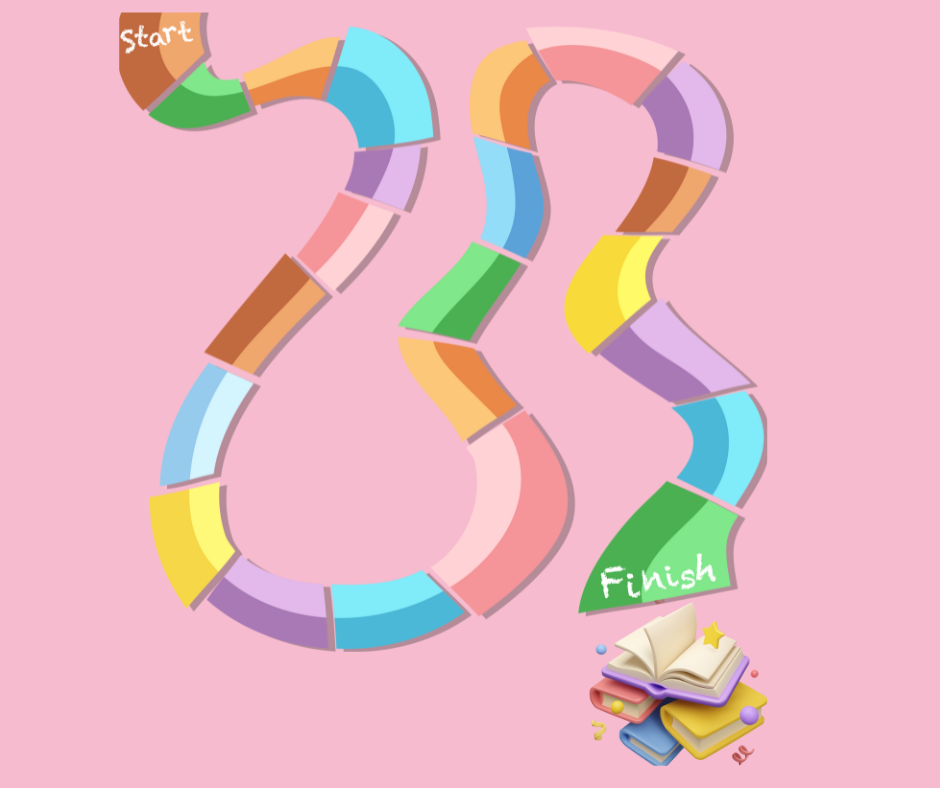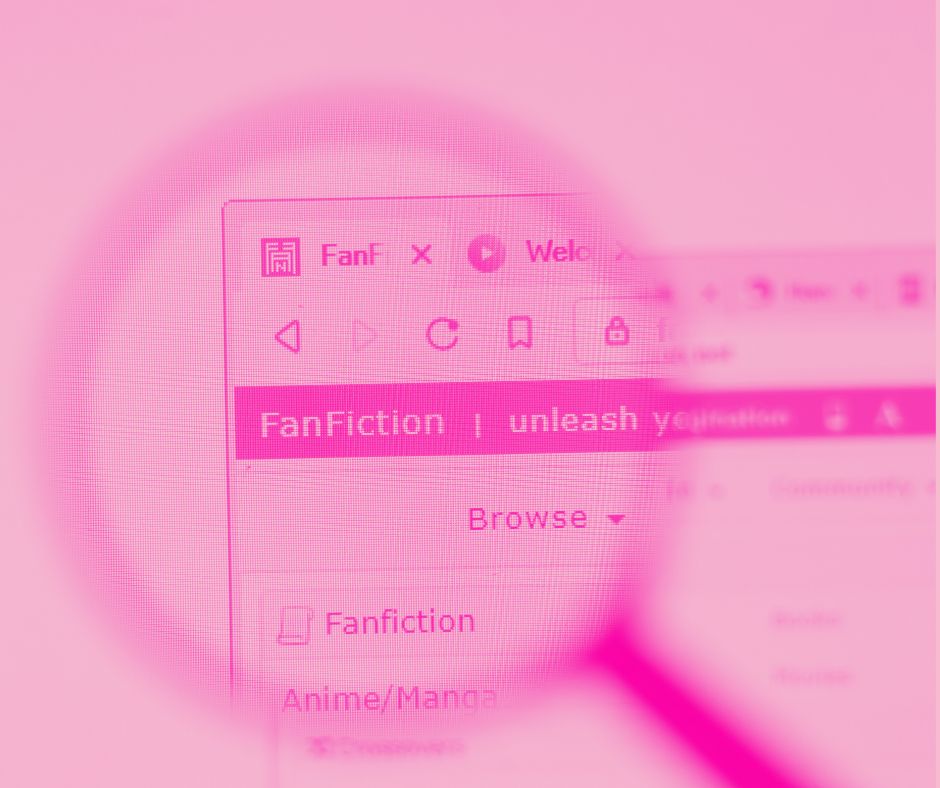How to Decide Your Publishing Path: Traditional or Self-Publish

Table of Contents
When it comes to publishing, for many there are strong attitudes about what is best. Traditional publishing still holds some air of superiority. While self-published authors question why anyone would give up control to be paid less. The truth of the matter is that both options have pros and cons. Your job is to figure out what is best for you and your book.
Another truth is that you don’t have to stick to one or the other. While you need to decide the path for any single book or series, you as an author can do both depending on what is best for each book.
When I wrote Deadly Valentine back in the early 2000’s, I knew I wanted to write a mystery series that included romantic and sexy bits. I was a fan of Hart to Hart and I wanted to write something like that. But I knew when it came to mysteries, many readers didn’t like the sexy bits. And in romance at the time, there weren’t series that focused on a single couple.
Initially, I toned down the sexy bits and pitched it to agents. The feedback was to turn up the heat and sell as a one-off romance. I didn’t want to do that. Ultimately, I decided to self-publish.
Later, I wrote the Southern Heat romance series, which was traditionally published, until the imprint closed and I got my rights back. At that point, I self-published it. I have a cozy mystery series that is traditionally published.
Each book I write, along with all the other decisions I make about the book is whether or not I want to pitch it to an agent/publisher, or self-publish.
So how do you do that? How do you decide the best publishing path for you and your book? Here are my thoughts:
Publishing Options
Before I go through how to choose the best option for you, lets talk a little bit about your options and their pros and cons.
Traditional Publishing
In traditional publishing, a publishing house takes the reins of bringing your book to life. This means they cover the costs of editing, cover and interior design, marketing (to some extent as even in traditional publishing, you need to market your book), and distributing your book. You have a team taking care of most of the business, while you do what you do best, write.
The Pros of Traditional Publishing
- Editorial Excellence: One of the best parts of going traditional is the access to professional editing. Note that just because you’ll get a developmental and copy edit, doesn’t mean you can get away with substandard writing. To get a traditional book deal, you need to pitch the best manuscript that you can.
- Marketing and Distribution: Traditional publishers have established channels to get your book out into the world, from bookstores to libraries and beyond. While most publishers do some marketing, such as submit for review at NetGalley, depending on the size of the publisher and how important they think you are, you may or may not get help in marketing. Every publisher expects you to help sell your book.
- Prestige and Validation: While this has changed over the years, especially in romance, there is still a prestige that comes from traditional publishing. It’s a validation of your work by industry professionals, which can be a huge confidence boost.
- Seeing your book on the bookshelf: Not all publishers will send your book to bookstores, but for those that do, it is a thrill to see your book in the store.
- Possible advance: While there are some authors who are getting 5- and 6-figure advances or their books are going to auction, the reality is that advances are less common than you might think. While bigger publishers offer them, most smaller presses don’t. That’s not a bad thing as you don’t earn royalties until you sell enough books to cover the advance. The reality is most authors don’t earn out their advance.
The Cons of Traditional Publishing
- The Waiting Game: The path to a published book with a traditional publisher is 6 months to 2 years, and that doesn’t include the time it takes you to pitch an agent to help you sell the book, or pitching publishers directly.
- Less Creative Control: When you sign with a publisher, you’re also signing over certain rights to your book. This can mean less control over things like cover design and marketing strategies.
- Royalty Rates: While you won’t have to front the costs of publication, royalty rates in traditional publishing are typically lower than self-publishing. This means you’ll earn less per book sold.
- Returns: So few people talk about returns. Your book has a very short life on the shelf of a bookstore. Books that don’t sell are returned. Those returns are counted against you. It happens that authors end up owing money if too many books are returned. For that reason, I’m not so hung up on my books being in stores. Also, if a bookseller supplies books for an event I’m attending, I buy all my books that didn’t sell during the event just so I don’t have returns.
- Difficulty getting another book deal if your last book doesn’t sell. Publishers are all about making money, so if they invest in your book and you don’t earn out your advance or make significant sales, it will be difficult to get another book deal not just with your publisher but with other publishers who will research your past sales success.
Embarking on the traditional publishing path requires patience, perseverance, and a bit of luck. But for many authors, the rewards of seeing their book in the hands of a devoted publishing team—and eventually, readers—make it all worthwhile.
Self-Publishing
Self-publishing is the DIY of the publishing world. You are the publisher and the writer all-in-one. Thanks to platforms like Amazon’s Kindle Direct Publishing (KDP), Ingram Spark, and Draft2Digital, getting your book into the hands of readers has never been easier. You control every aspect of the publishing process, from the initial draft to the final product.
The Pros of Self-Publishing
- Creative Control: You call the shots on everything from the cover design to the pricing and marketing strategy. You hold all rights which gives you freedom to market and distribute your book however you want. Want to give it away free? You can. Want to write bonus content for it? You can. Want to sell audio or foreign rights? You can. Your book, your rules.
- Higher Royalties: Without a traditional publisher taking a cut, you stand to earn a higher percentage of your book’s sales price. Even if you charge less for you book than traditional publishers, you often earn more per book self-publishing than in traditional publishing.
- Speed to Market: Self-publishing can get your book to readers much faster than traditional publishing. Some authors publish 4, 6 or more books per year.
The Cons of Self-Publishing
- Upfront Costs: Editing, cover design, formatting—it’s all on you. Quality matters, and these services don’t come cheap.
- Marketing and Distribution: While self-publishing platforms offer wide distribution, that doesn’t mean your book will be in bookstores. In fact, most bookstores won’t shelf your book unless you have a return policy (Ingram Spark offers this). Your book can be available to order online through all bookstores, and of course, ebooks will be available. The next challenge though is getting noticed, which means time and money into marketing.
- Quality Perceptions: Despite many self-published successes, some people still view self-publishing with skepticism. Romance readers are the exception. They love romance and will read any authors, regardless of how they publish, who write a great book. With that said, romance readers do expect a quality written and designed book. They may shy away from poor quality covers especially since there are so many romances with great covers to choose from.
Hybrid Publishing
For years, many authors, including myself, who are both traditionally and self-published have referred to ourselves as hybrid authors. That’s not the same as hybrid publishing, though. Hybrid publishing combines both traditional and self-publishing. In this model, authors pay for services such as editing and book design, while the publisher offers a one-stop-shop for professional services including ISBN and possible distribution. This partnership aims to combine the author’s creative freedom and financial reward potential with the publisher’s expertise and resources.
Note that hybrid publishing isn’t vanity publishing. In vanity publishing, an author pays the publisher to produce the book. In hybrid publishing, the author still pays, but the publisher vets the writing. It would be like hiring Penguin Random House to publish your book (note that PRH doesn’t have a hybrid line. I’m just trying to illustrate that a hybrid publisher is a publisher, not a book printer). The Independent Book Publishers Association has set a criteria for what constitutes a hybrid publisher.
- Define a mission and vision for its publishing program.
- Vet submissions.
- Commit to truth and transparency in business practices.
- Provide a negotiable, easy-to-understand contract for each book published.
- Publish under its own imprint(s) and ISBNs.
- Publish to industry standards
- Ensure editorial, design, and production quality.
- Pursue and manage a range of publishing rights.
- Provide distribution services.
- Demonstrate respectable sales.
- Pay authors a higher-than-standard royalty.
This can get tricky because some “publishers” use the word hybrid loosey goosey. Some smaller presses have a traditional and a hybrid service. Jane Friedman has a great article about hybrid publishers and what to look for and avoid.
The Pros of Hybrid Publishing
- Professional Support: Hybrid publishers offer a range of professional services, from editing and cover design to marketing and distribution.
- Higher Royalties Than Traditional Publishing: While not as high as pure self-publishing, hybrid publishing typically offers better royalties than traditional routes, giving you a larger slice of the pie.
- More Creative Control: Though not absolute, you’ll often enjoy more say in the final product than with traditional publishing. Your voice matters here, and your vision for your book is respected.
The Cons of Hybrid Publishing
- Upfront Costs: Unlike traditional publishing, where the publisher bears all costs, hybrid publishing often requires an investment from the author similar to what they’d pay in self-publishing. A self-published author likely pays $1,000 to $2000 for services, whereas hybrid publishing is closer to $3000 to $5000. It all depends on what services you want them to do.
- Reputation and Quality Variances: The hybrid publishing scene is diverse, with varying levels of quality and reputation among publishers. It’s crucial to do your homework and choose a reputable partner. There are many scam and questionable hybrid publishers as well. You can check out Writer Beware in general, and this post they have on a few specific hybrid companies to avoid.
- Marketing Efforts May Still Fall on You: Even with support, the bulk of marketing and promotional efforts might still be your responsibility. In fact, one complaint I often see with hybrid publishing is lack of marketing results. Be prepared to be your book’s biggest cheerleader.
What Publishing Option is Best For You?
Now that we’ve covered the options and their pros and cons, you may already have a sense of what you’d prefer. But lets now go over questions to ask yourself in making a decision about which publishing option to choose.
What are your career objectives?
Do you want to be rich or famous or both?
I once asked another author about why Twilight became so big when there were plenty other teen vampire books, and his answer was “Stardust.” I’ve looked and Amazon doesn’t sell stardust. All that to say there is no guarantee any publishing route will lead to money or fame. In fact, Publishers Weekly has an article that indicates most traditional authors make a living through non-writing-related work (e.g. courses or editing services not their books.)
While there are traditional and indie authors who are both rich and famous, there are far more self-published authors who are rich than traditional authors. That’s not to say self-publishing is a guaranteed path to riches. There are far more authors making little to nothing than there are six-figure authors in all options. In fact, you might be surprised to know that most traditionally published authors have day jobs.
But if your goal is to make money, self-publishing offers more control and per-book return rates than traditional. This requires you to treat your author career as a business.
If you’re looking for prestige over income, then traditional publishing may be a better route.
How much control or flexibility to you want?
It’s true that in traditional publishing you have less control. However, except for one time for a non-fiction book, I’ve always had input on cover design and could fight for any content the editor wanted to change. With that said, self-publishing gives you the ultimate in control in terms of the book content, cover, publishing dates, marketing, etc.
How much money do you have to invest in your writing career?
One reason that self-publishing struggles with prestige is the lack of quality from some authors. They write and publish, with no thought to a professional package. Successful self-publishers hire editors and book designers, forking out $500 to $1,500 or more for these services.
There are tools to help you edit, design your book cover, and format the interior, but if you want to compete with top-selling authors, you need a professional to handle each of these. If you don’t have the money to invest in your book, or are adverse to losing money, traditional book publishing is a better option.
How patient are you?
The path to getting a publisher and then working with that publisher to prep and publish the book is a long time. Any book I submit today, I wouldn’t expect to be available to reader for 18 months to two years. Of course, this timeline depends some on the publisher. Big 5 and other large imprints will take longer. Smaller presses will be faster. But if you want control over when and how often your books are published, self-publishing is a better option.
How well does your book fit into your genre’s lane?
This is an important question and you need to truly understand your genre to answer it. When I attempted to sell Deadly Valentine, I knew up front that I wasn’t quite fitting in either the romance or mystery lane, which is why I ultimately decided to self-publish. But my romances and cozies fit perfectly into what publishers want, so I sold them traditionally.
If your book doesn’t fit in the expected norms of the genre, then self-publishing will be a better option. Self-publishing doesn’t have such lanes and what’s been fun to watch is how readers love that self-published authors mix and match genres and often push the envelop in what’s expected.
Do you already have a large following of potential readers?
A platform and following will help you get a traditional book deal, but if you already have a following clamoring for your stories, self-publishing is the option that can lead to greater per-book income.
Did you use AI in generating prose?
Agents and traditional publishers won’t take your book if you’ve used AI to generate any of your prose.
Tips to Navigate Publishing Options
Once you’ve decided on the best option for you and your book, it’s time to start the publishing process. Here are tips for how to navigate each publishing option.
Tips for Traditional Publishing
If you want a big five or large imprint (e.g. Sourcebooks’ Bloom imprint), then your best option is to get an agent first. If you’re okay with a smaller press or perhaps are targeting Harlequin, then you can pitch the publisher directly. Here are tips for pitching:
- Make sure your book is done, and by done, I mean revised and edited.
- Research agents/publishers that represent/publish the type of book you’ve written. Along with category of romance, you need to consider word count and other guidelines indicated by the agent/publisher. Places to find agents and publishers include Writers Market for Literary Agents or Writers Market for Novel and Short Story, Query Tracker, and My Manuscript Wish List. Following agents or publishers on Twitter/X and looking for #MSWL is another option. Note that you should verify any agent/publisher you find on these resources by going to their website.
- Write a synopsis of your story. This is a 1 to 2 page overview of your book, written in present tense, with the same style and tone of the book. It’s single spaced and highlights the major plot of the story. Don’t leave a cliffhanger unless your book ends in a cliffhanger. The synopsis shows an agent/publisher that you can write a complete story, so leaving off the ending tells them you don’t know how to end a book. It will not entice them to request the manuscript to find out what happens.
- Write a query letter. This is the first item an agent/publisher reads so it needs to make a great first impression. It should be addressed to the agent/publisher by name. Grab their attention quickly with a great hook. Tell them the title, genre, and wordcount. Provide a brief blurb about the book. Give a short bio that includes past writing credits if any (even if they’re in a different genre), and/or why you wrote the book.
- Be patient and diligent. Part of getting an agent or publisher has to do with finding the right one at the right time. A no from an agent or publisher doesn’t necessarily mean your book isn’t good enough. When I agented, I turned down many well-written books because they just didn’t fit with what I was looking for. At the same time, if you’re getting lots of rejections, review your book, synopsis, and query to make sure they’re as good as they can be.
Tips to Self-Publishing
As a self-publisher, you’re the captain of your own ship, steering your book through the process of prep, design, publishing, and distribution. It offers an unparalleled level of freedom and potential for profit, but it also demands a great deal of effort and an entrepreneurial spirit. Here are tips for self-publishing.
- Invest in Professional Services: Don’t skimp on professional editing and cover design. These are crucial for making your book competitive. A book that looks hobbled together in a DIY effort may make readers think the interior content isn’t great either. Errors in grammar and spelling can lead to poor reviews that will prevent future readers from buying your book.
- Buy ISBN’s. While you can get them free through publishing platforms such as Amazon, it’s better to to have your books listed under your publishing company (author name or publishing company) than Amazon’s or other platform. Buy in bulk if you can as one ISBN is $125 but 10 of them is $295. You can get them at Bowker.
- Decide your distribution platforms: This is a whole other blog post, but basically, do you want your ebook to be exclusive to Amazon Kindle Unlimited, or available to other ebook retailers such as iBooks and Nook? Whoever you choose for print can arrange to have your book available to all book retailers. Popular choices for this are Ingram Spark, and Amazon’s KDP’s wide distribution. Don’t forget, you can sell direct through your own website as well. With ecommerce tools and a service such as Bookfunnel to deliver ebooks and Book Vault or Lulu to deliver print books, you can sell straight from your own website.
- Build a marketing mindset: What do you look for when buying a book? If you’re like most readers, the cover and blurb lead to deciding on buying or not buying the book. To get sales, you need to think like the reader. You need to determine who your perfect reader is, what about your book they’d like, and how you can reach them so they can know about your book.
- Build Your Author Platform: To be honest, you should do this regardless of what publishing model you choose. Start early with social media, a website, and an email list. Your platform is key to marketing your book.
- Embrace Community: Engage with other authors and readers in the romance genre. Don’t underestimate how much engaging with you will help readers buy your book and share it with others. Colleen Hoover was the number one book seller in 2022 because readers talked about her book.
Tips for Hybrid Publishing
Hybrid publishing offers the support of professional publishers but with greater control as an indie-author. For romance authors straddling the line between independence and the desire for professional backing, hybrid publishing could be the best answer. But because paid publishing services is filled with shysters, it’s important to find the right partner.
- Prepare a pitch package similar to what you would for a traditional publisher. Reputable hybrid publishers vet the books the help authors publish.
- Do your due diligence to research. Don’t go with the publisher that calls you out of the blue or spams your email. Go out and research hybrid publishers. Talk to authors who’ve used them for referrals. Before signing with a hybrid publisher, research their track record, speak to their authors, and understand exactly what services they offer and at what cost. Consider joining the Independent Book Publishers Association for information and resources on hybrid publishers.
- Understand the Contract: Hybrid publishing contracts can vary widely. Pay attention to rights, royalties, costs, and the scope of services covered. Don’t be shy about negotiating terms.
- Understand how the process works: What is the timeline for editing and publishing. Find out how you get author copies and if there are extra expenses for it. If they offer marketing help, what specifically do they do? Do they give you a website and if so is it a single book listing, an author page, or something more robust? Where will the book be available (distribution)? Is the book listed under the publisher’s account or the author? If the book is in the publisher’s account, how can you change prices, description, categories or other aspects of the listing? (Trust me, this is important! I have a trad publisher who doesn’t have the entire description on the book page and I have no way of correcting it).
- Prepare to Participate: While hybrid publisher will help you prepare your book, they’re not going to do everything for you. Be ready to engage in the publishing process, from marketing to book tours. Your involvement can significantly influence your book’s success.
Remember, that as an author, you don’t have to pick a single publishing path. It’s possible you have a book/series that is ideal for traditional publishing, and another book/series that is better suited to self-publishing.
If you want to go the traditional route but are unable to secure a deal, the good news is that you have two other options for publishing. In fact, you have more than two options, as you can post your book as a serial, start a subscription, or simply give it away (many authors giveaway a book as a way to find readers that later will buy future books).
Do you have questions or feedback on publishing options for romance authors? Let me know in the comments below.






Responses